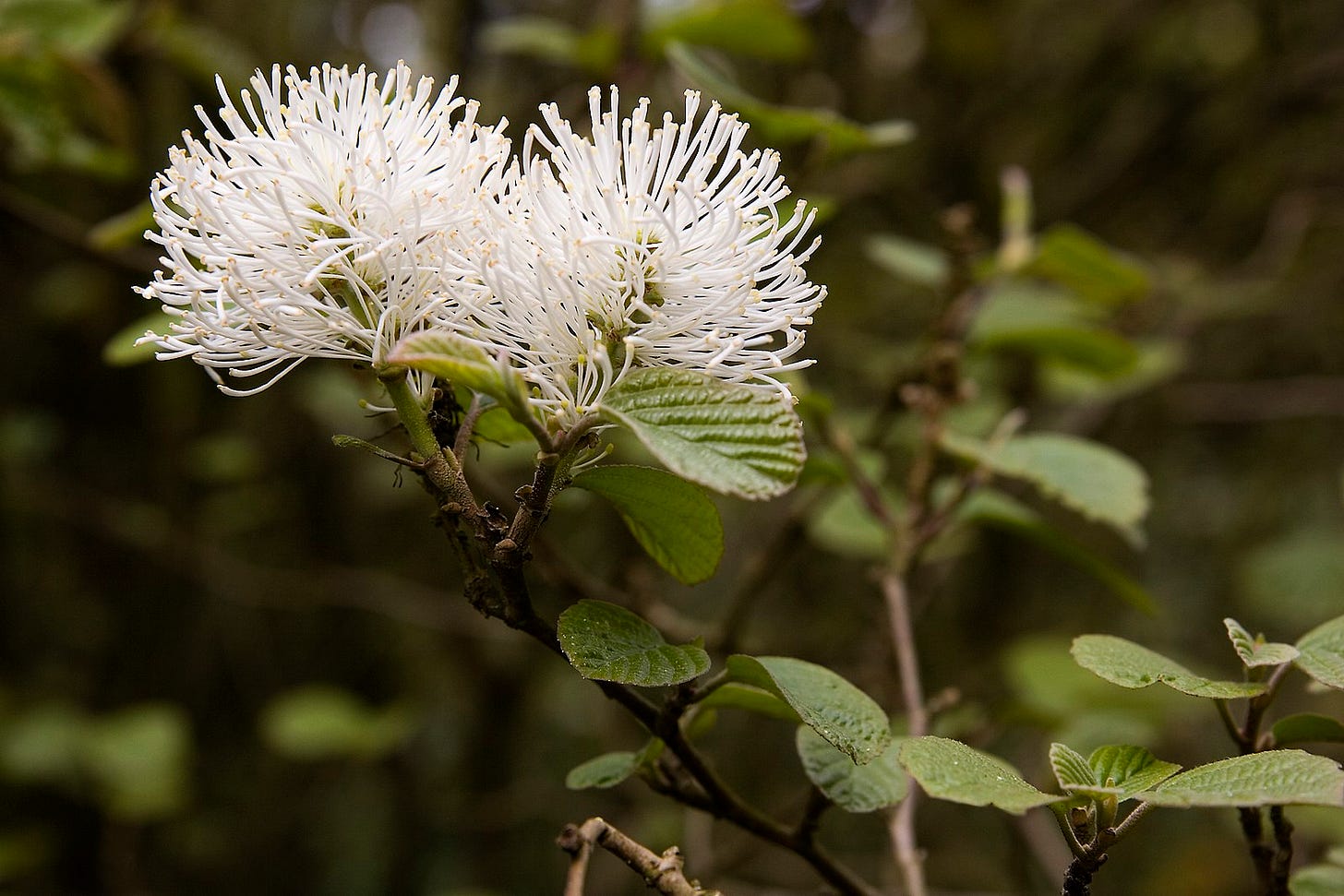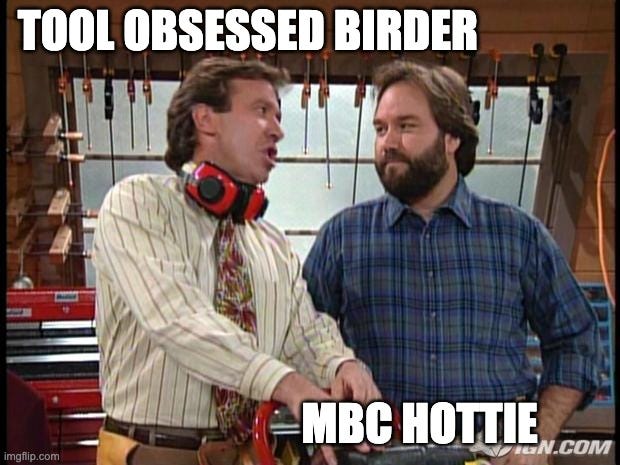This micro-issue is here to keep you in the loop on spring migration’s breakneck comings and goings. There’s a lot happening—every day, every hour, every bush—and the bird lists just keep growing. If you’re feeling behind or left out, don’t. Just step outside. Right now. Look around. Listen. (Maybe try one of the tools in our below guide!)
Notice what’s there. Congrats—you’re part of it.
TNM
QUICK UPDATES & ANNOUNCEMENTS
1.) ATTENTION EARLY-WORMIES: Every Tuesday and Friday in May, we’ll be birding before work in McGolrick Park—from around 6:30 to 9 AM. New to early birding? Trust us: morning holds a rare kind of clarity. The light is low and golden, shadows long and soft. Each sound is distinct, easier to know and trace. It’s the best time to learn—birds are active, visible, and unhurried.
2.) SUNDAY FUNDAYS: Every Sunday this May we’re going birding in a New York City hotspot outside of Greenpoint. We’ll post time and location each week on Instagram and in this newsletter. (If you’re reading this from your bedroom, you’re missing our Williamsburg outing with Snow Peak. Run over!)
3.) REMINDER: Did you order your members-only socks?
MICRO-SEASON: APR 21 - MAY 4
“Q2” is an artless invention, cooked up by diabolical MBA grads in a windowless conference room. (No offense, biz school survivors.) Immolate the ideas of corporate time like you would a Tesla dealership. Then, bask in the warm, smoldering remains: micro-seasons!

Micro-seasons are the everyday proofs of a great cosmic dance between Earth, our breathing, blooming Mother, and Sun, the eternal muse to whom she currently bows.
This micro-season, in McGolrick Park, our proxy for NYC and perhaps even larger swathes of the eastern U.S., one noticed:
Parks turn GREEN · Witch-alders, Carolina silverbells, golden Alexanders, columbines, alliums, red chokeberry, leatherleaf viburnum, camas, azaleas, blue violets and bluebells bloom · First of season honeybees, paper wasps and yellow jackets · Cabbage whites appear · First of season Great Crested Flycatcher, Ovenbird, Baltimore Oriole, Scarlet Tanager, Rose-breasted Grosbeack, Northern Parula, Gray Catbird, Brown Thrasher, Blue-gray Gnatcatcher, Eastern Kingbird, Field and Savannah Sparrows

And here’s a full list of McGolrick birds:
WARNING! If you start to feel overwhelmed by these lengthening bird lists, fall back. Don’t overthink it. Seriously—don’t worry. The hope here is that, besides keeping you abreast of avian goings-on in New York City, one of these names just gets you curious enough that you have to click it, know it, and someday find it.
American Crow · American Goldfinch · American Herring Gull · American Kestrel · American Redstart · American Robin · Baltimore Oriole · Barn Swallow · Black-and-white Warbler · Black-capped Chickadee · Black-throated Blue Warbler · Black-throated Green Warbler · Blackpoll Warbler · Blue Jay · Blue-gray Gnatcatcher · Blue-headed Vireo · Brown Thrasher · Chimney Swift · Chipping Sparrow · Common Grackle · Common Raven · Common Yellowthroat · Cooper's Hawk · Dark-eyed Junco · Double-crested Cormorant · Downy Woodpecker · Eastern Kingbird · Eastern Towhee · European Starling · Field Sparrow · Fish Crow · Gray Catbird · Great Crested Flycatcher · Hermit Thrush · House Finch · House Sparrow · Laughing Gull · Magnolia Warbler · Mourning Dove · Nashville Warbler · Northern Cardinal · Northern Flicker · Northern Parula · Ovenbird · Palm Warbler · Prairie Warbler · Red-bellied Woodpecker · Red-winged Blackbird · Rock Pigeon · Rose-breasted Grosbeak · Ruby-crowned Kinglet · Ruby-throated Hummingbird · Savannah Sparrow · Scarlet Tanager · Song Sparrow · Swamp Sparrow · Tufted Titmouse · Veery · Warbling Vireo · White-throated Sparrow · Wood Thrush · Yellow Warbler · Yellow-bellied Sapsucker · Yellow-rumped Warbler
Nota bene: The birds listed above are from the entire micro-season, not just our Saturday outings! Learn how to tell stinging bugs apart here. Review our Migration Cheat Sheet. Cabbage Whites are an invasive butterfly species, originally from Eurasia. Learn about other species of expected butterflies here.
MICRO-REHASH: TOOL TIME
WARNING: This section implicitly recommends screen usage. Our screens are otherworldly, transcendent, attention stealing, life ruining and deadly. If you want to do one good thing for your mental health today, you’ll hurl your glowing rectangle into the nearest river. Seriously, if you need help, check out these resources
Too many birders are obsessed with tools. Us MBC Hotties? Eat dirt, Tim. Besides a good pair of binoculars, all you need are clear eyes or ears.
But before you go sprinting into the nearest park, senses on, butt-naked, consider this: a new birder’s practice can benefit greatly by occasional use of the below tools. And that’s especially true during spring migration, when many uncommon species are easier to encounter.
So here it is, for your new subscribers and rehashees alike, our list of good-to-know birdwatching tools. Descriptions up top. Detailed instructions below.
Good luck.
TOOLS
Merlin
Gist: Two killer features: Sound ID: Shazam for birdsong! + Explore: the easiest way to quickly find out what species are most common given a location/date. [iOS, android]
iNaturalist
Gist: This app is 🐐’d because A) Jenny Odell recommends it B) the photo ID feature (upload photo —> species name suggestion) that covers all creatures, including flora is the best around. [iOS, android]
What we love: Besides photo ID, we also use iNat to browse laypeople photos of nearby birds. What’s great about this approach is, unlike guides featuring professional photos or illustrations, you can get a hyper-local + realistic sense of how birds who’ve actually visited your hood actually look. (Get a taste with this custom view of McGolrick Park.)
Sibley v2
Gist: Easily searchable app good for studying US bird species. Think Sibley Guide, but pocket-sized. Note: This is the only listed app that isn’t free. Costs 19 bucks, but is good for all, and great for novice→intermediate birders trying to step up their game. [iOS, android]
What we’re into: The app has a Similar species feature that shows easily confused species in a side-by-side view.
eBird
Gist: The canonical bird database by Cornell’s School of Ornithology. When folks say eBird, they’re referring to either:
The on-the-go app more experienced birders use to log noticed species
What we’re into: While we do use the app to log species seen at McGolrick Park, we highly recommend new birders browse the site for “hotspots,” or places with the most logged species. (You can do this for any location in the world!)
INSTRUCTIONS FOR THE ABOVE TOOLS
Merlin Sound ID—
Hear a bird? Tap Sound ID. You’re off!
Watch the app surface species’ names in realtime.
False positives, though very uncommon, do happen. So if you’re hearing an American Flamingo in North Brooklyn, get your grain of salt on
Avoid false positives by, instead of walking around with Sound ID continuously doing its thing, only using the feature when you hear an ear-catching sound
Merlin Explore—
Tap the Explore tab
Enjoy a clean, clickable bird overview of nearby birds, from most to least findable
Traveling? Daydreaming of travel? Need to ID a bird image texted by a farflung friend who knows you’re bird horny? Tap the filter icon at the top-right of the Explore page to adjust Location and Date.
If a bird photo is missing, tap the placeholder image then download the most relevant “packet”
iNaturalist local bird sightings:
Tap Explore
Tap 🔎
Search for Aves —> Tap Find organisms named Aves —> Tap Birds
Blue markers should pop up. You can click into those or toggle (top-middle) to grid and list views
Pay attention to dates—nearby birds may be seasonal
iNaturalist photo ID:
Tap Observe
Take a photo or Upload/Add one from your library
If uploading, make sure you set location (approximate is okay)
If using camera, do your best—zoom-in and/or crop
Tap What did you see?
A list of suggested species will appear. Tap the ℹ️ for more info and additional reference photos.
Once you find a good-enough match, tap the species —> then tap Share. Members of the iNaturalist community will review and verify your sighting
Sibley v2 Side-by-side feature:
Imagine you think you’re seeing a Magnolia Warbler. If you view that species in-app, then tap this icon—
—you’ll see this page:
Sibley is saying Are you sure you’re not seeing a similar species? Click into a similar species and you’ll see a side-by-side like this:
You can then decide whether your IRL bird has the Canada Warbler’s spectacles + necklace ,or the Magnolia’s zorro mask + front-length streaks.
eBird hotspots search:
Open ebird.org/hotspots
Type a location into the search field—page upper-right
The results will look like colored pins on a map—use the SPECIES OBSERVED key—page lower-right—to find the busiest (read: birdiest) hotspots. Example:
There’s of course an alternative, very simple way to find places to bird near you. Open Google Maps and just find the green. The parks. The wild. In most cases, the bigger the green, the birdier the scene.
How’d this go? Don’t hesitate to send questions and comments our way by simply replying to this email, chatting in Substack, or DMing. Or just holler IRL. K, bye!








